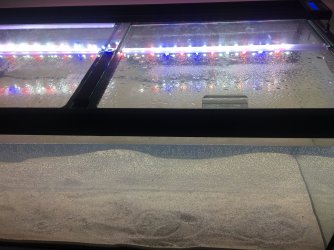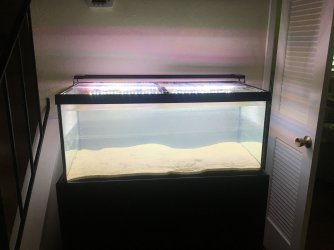Hi everyone...
Well, I am excited to get this tank set up, and I have had the sand Quikrete Play Sand, in there for over 24 hours now. It's still pretty cloudy. Difficult to see from one side of the tank to the other, for example.
I painstakingly washed the Play Sand in 5 pound increments until the water was very clear...
my wife suggested running an old MarineLand filter in the tank, not really caring about how long the impeller lasts, just to see if we can clear the cloudiness up.
I did some Google searches and checked forum posts also. I didn't see anyone really address using an old filter to attempt to clear the cloudiness. Should I just wait longer?
I am anxious to get the cycle going!
Help...! My fish-advising best friend who has guided me through most of this process is a gravel-til-the-end guy and said I'd have nothing but trouble w/ the sand. I hope to prove him wrong but, so far, he's totally right...
Well, I am excited to get this tank set up, and I have had the sand Quikrete Play Sand, in there for over 24 hours now. It's still pretty cloudy. Difficult to see from one side of the tank to the other, for example.
I painstakingly washed the Play Sand in 5 pound increments until the water was very clear...
my wife suggested running an old MarineLand filter in the tank, not really caring about how long the impeller lasts, just to see if we can clear the cloudiness up.
I did some Google searches and checked forum posts also. I didn't see anyone really address using an old filter to attempt to clear the cloudiness. Should I just wait longer?
I am anxious to get the cycle going!
Help...! My fish-advising best friend who has guided me through most of this process is a gravel-til-the-end guy and said I'd have nothing but trouble w/ the sand. I hope to prove him wrong but, so far, he's totally right...



